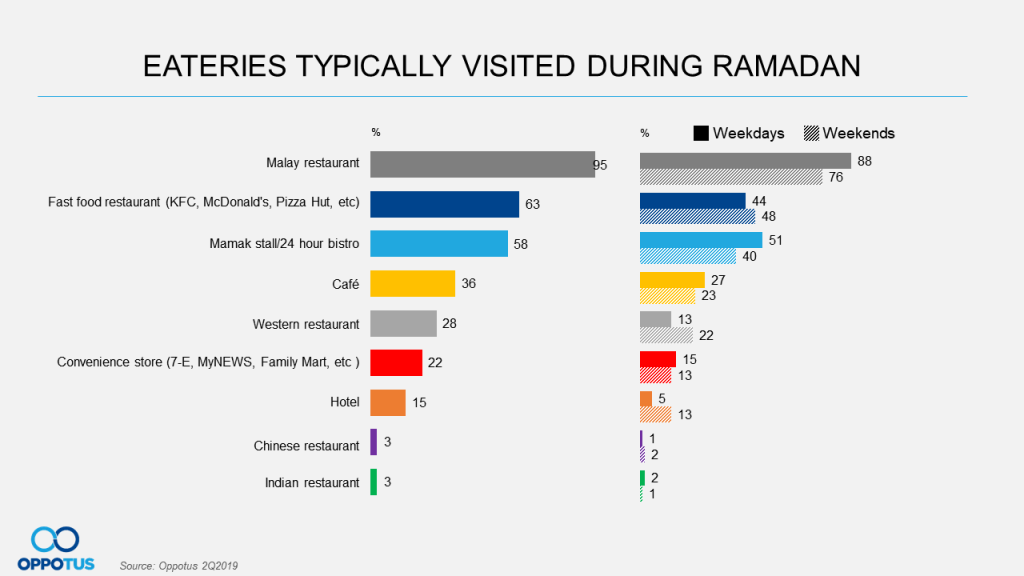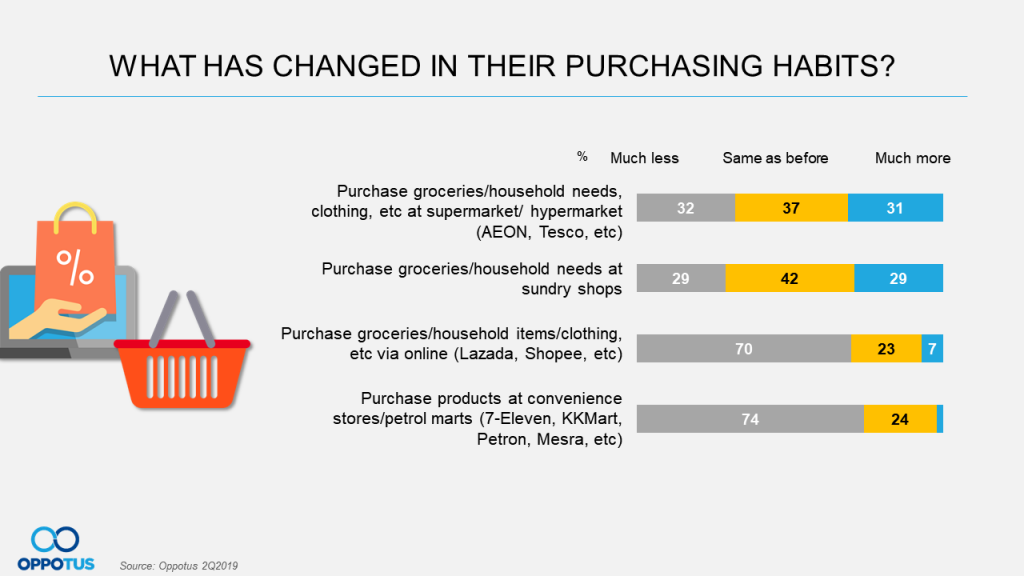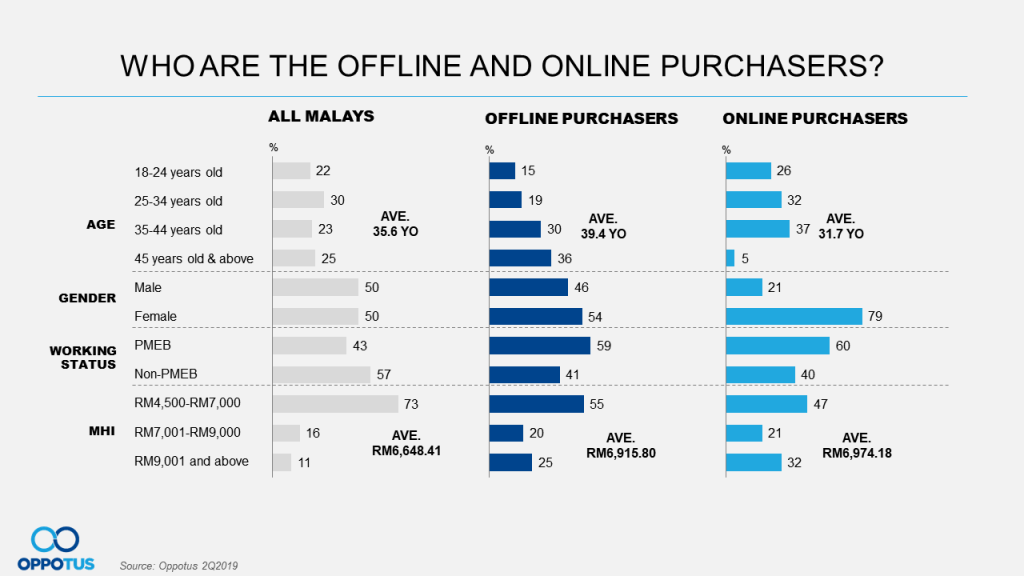Welcome to a special Ramadan-Raya edition of Malaysians on Malaysia, where we’ll be taking a closer look at the behaviour of Malaysians during this special holiday period, paying attention to areas such as their spending and activities to see how people celebrate in 2019 compared to previous years!

If you’ve been following us for a while now, you’ll be familiar with our quarterly Malaysians on Malaysia (MOM) features which bring you all the latest insights on the behaviors of Malaysians in major cities around the country, exploring areas such as spending habits, consumer confidence, media trust, and the ways that Malaysians are adopting tech trends such as e-wallets.
As Muslims around the world celebrate Hari Raya Aidilfitri, Malaysian Muslims are not excluded as this period is considered one of, if not the most significant seasonal holiday periods in Malaysia for both cultural and economic reasons. Thus we bring you our maiden Raya Edition report to showcase the activities of Malaysians during the month of Ramadan.

The Raya Edition is set within the parameters of how much Malaysians spend on items such as groceries, food, clothing, house items, etc, in preparation of Raya. Of particular interest to us is how much more or less they engaged in key Ramadan activities vs previous Ramadans i.e. places they go for sahur (to break fast) and places they go for purchases.
Since our past year or so of MOM reports has focused on how the change in government and the implementation of various new policies have affected consumer confidence and spending among Malaysians, it will be interesting to see if any changes will be reflected in the spending of Malaysians during Ramadan. Especially now that it has been more than a full year since the general election.

First, let’s take a look at the overall spending of Malays in Malaysia while preparing for Raya. As seen here, the average spend is RM1,313, where the majority are spending between RM500-RM1,000 during their Raya preparations.

So how have their activities changed for this year’s Ramadan versus previous years?
For this year, it is apparent that “Family Time” has taken a more center stage(more so than before) and underpins all Ramadan activities.
Why do we say so? Let’s look further.

Taking a look at their eating habits during this time period, this time around, close to 60% of Malays claimed that they spend more time eating at home vs eating out, which would indicate that more people are eating at home with family, whereas a higher % of those who are eating out would be doing so with friends and acquaintances rather than just family members.
People are also seen to be buying food and drinks at the bazaar Ramadan much more compared to before. This also fits in with the “family time” theme as we often find that food purchased from bazaars is commonly for the purpose of being consumed at home to break fast together with family members Meanwhile when it comes to going for sahur and outside restaurants, we find that a staggering amount of people are doing so much less compared to previous years, with 75% claiming that they are going for sahur at 24 hours restaurants much less, and 81% claiming that they are going to fast food restaurants much less.
Some recent reports have been claiming that visitor rates to Ramadan bazaars is dwindling, but despite that, our data shows that the bazaars still do attract quite a number of customers.

When it comes to those who eat outside, we find that most of the people that opt to do so are the younger adults – which isn’t surprising considering their busy schedules and routines which include work and various leisure activities, making them less likely to be able to readily return home for a family meal. Furthermore, when it comes to city areas, many of these young adults are students or young workers who are living away from their families and thus do not have people at home that could help them prepare meals to break fast with. With all the aspects of their life still going on during the fasting month, it would be more convenient for them to just break fast outside alongside their peers who are in similar situations.

Overall, Malay restaurants are evidently the most preferred choice for these people to break fast at, followed by fast food restaurants and Mamak stalls.
Looking at the difference between weekdays and weekends, we see that eating at non-traditional eateries (e.g. western, hotels and fast food restaurants) is more prominent during weekends where people have the desire to do something different compared to usual local traditional fare, although Malay restaurants are still very much frequented during the weekends as a staple for those eating with families and friends alike.

It is interesting to see how people’s choice of companion differ depending on the type of outlets where they are eating. While friends are usually the key companions when eating outside, we find that more indulgent dining such as western are more often reserved for family time. This fits in with the theme of people wanting to go for something more special during the weekends, as the weekend meals are also when all the members of the family are available to come together specifically for some family bonding time – something that is important amongst Malaysians year round, but understandably gains increased importance during the Ramadan period.

Now, let’s look at their purchase behaviour.
When it comes to making purchases, offline shopping is still more prevalent compared to online shopping. Consumers are seen to buy groceries/household items at supermarket and sundry shops at least 4 times more than they do online. So while online purchasing is becoming more and more ubiquitous with each passing year, when it comes to shopping for Ramadan, Malays in general still prefer conventional shopping.
This is most likely due to the practice of offline shopping often being associated with spending time with family. Going to the shopping mall with family members can almost be considered a national past time in Malaysia, but during the festive period, the practice of going shopping in order to purchase groceries and clothing in preparation for special occasions such as open houses and parties almost becomes an event on it’s own. Needless to say, family shopping is an activity which is even more important during festive seasons, which again follows the “family time” theme underpinning this festive period.

So who are the online and offline purchasers?
Online purchasers are more often middle-aged (aged 35+), females and from a higher household income background, while Offline purchasers are generally older (45+). This lines up with our expectation of older shoppers being generally more hesitant to adopt online shopping habits rather than sticking to offline shopping.
All-in-all, we see that being together with family and enjoying family time matters more during Ramadan, and that Malaysians have taken these values a step further and exemplified it even more in 2019 as proven by the activities of malay families during the recent Ramadan. As more and more people continue to adopt new technology and digital media becomes more prevalent with each passing year, there have understandably been concerns that traditional values and practices such as spending quality family time together will decline. As Malaysians have demonstrated during this years’ Ramadan season: this is not the case, and it is pleasing to see that families appear to be putting in more effort than before to stay close to each other during important occasions.
We spoke to about 300 Malays aged 18+ in Malaysia across key cities. If you would like to take a deeper look at these statistics, feel free to get in touch with us at theteam@oppotus.com


